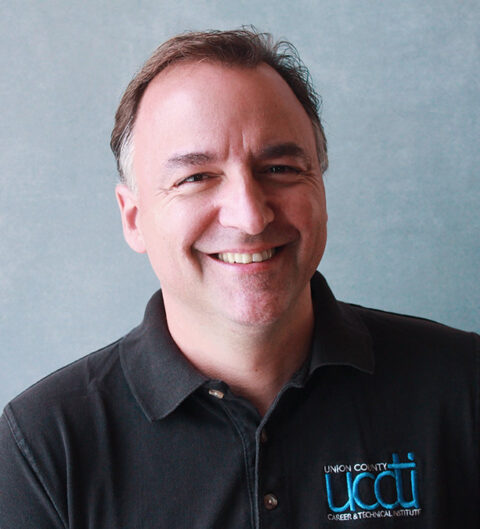“I get to know each of my students and inject humor when instructing, and build a comfortable space for everyone to relax, be themselves and grow. For some, this is the only safe environment they have. For some, this means the difference between graduating or dropping out.”
As a child, Michael Shephard liked taking things apart and putting them back together—or at least trying to. In high school, he rushed to sign up for an automotive technology program, excelling enough that his teacher took his own car to Shephard for a repair. “His confidence in me helped me to develop my own, and also meant the world to me,” Shephard wrote in his prizewinning application.
In two decades working in industry, including as a General Motors World Class Technician, Shephard particularly enjoyed teaching apprentices and transitioned to teaching at the college level. Realizing he could have a positive impact on more students in high school, Shephard started teaching at Union County Vocational-Technical Schools, using a minimal budget to build his program over the past four years. (Today, he continues to teach at Union Community College so he can prepare his high schoolers for further education.)
Shephard started, essentially, from scratch, teaching engine repair without engines. Once he had engines, he waited another year for stands to mount them, and another year for new tools and supplies. He structures his classes to maximize the materials he has, dividing students into two groups—brakes and HVAC, and steering, suspension and auto transmission—and reverse the group assignments the next semester. Advanced students are also split into teams, diagnosing and making repairs. Shephard expanded his program to include a third year of study that operates a fully functional auto shop, where students repair cars for community members.
In his classes, Shephard teaches students according to their learning styles, using the Visual, Auditory, Read/Write, Kinesthetic (VARK) method. One-third of his students receive special educational support. Upon completion of his program, 90 percent of Shephard’s students earn an Automotive Service Excellence certificate. Last year, 39 percent of his graduates pursued postsecondary education, 17 percent began their automotive careers, another 17 percent went into an automotive union program that provides free advanced training and job placement, and 11 percent joined the military.
“The best way to encourage a child to succeed is to make them feel understood and accepted.”
